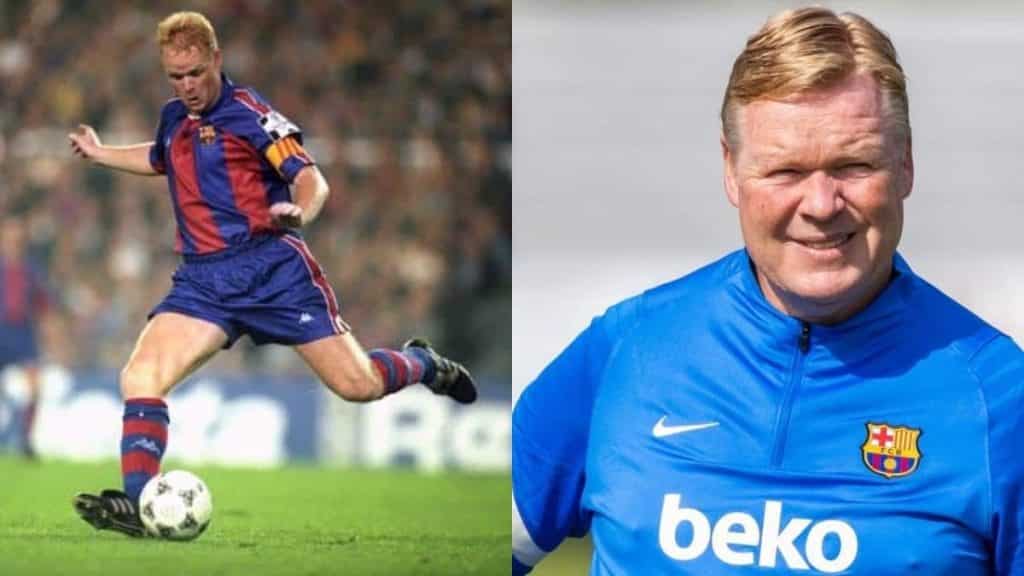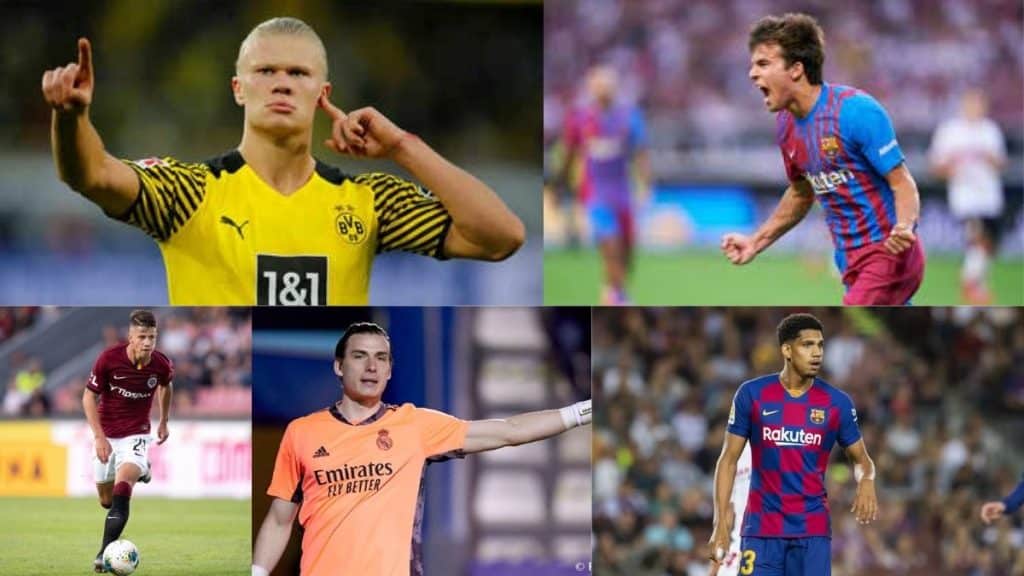In the light of recent events where Barcelona’s legendary right-back, Dani Alves was released by the club during his brief second stint at FC Barcelona, we have decided to analyze his best season for the club 2010-11. Dani Alves spent many years at Barcelona and had a great career throughout.
Dani Alves is one of the typified fullbacks produced by Brazil since the 1950s. Much like his legendary predecessors Djalma Santos, Léo Júnior, Cafu and Roberto Carlos; Alves is a highly attack-minded fullback.
This makes sense considering, Alves started playing football as a winger but got repositioned into a right-back by his father.
Ever since his arrival to Europe in Sevilla in 2002, Alves’ playstyle attracted multiple European football giants like Liverpool and Chelsea.
However, the deals didn’t go through, until 2008, when Alves joined FC Barcelona.
Dani Alves’ Best Season
The 2010-11 season was his best season at Barcelona. Not only was he good at defense, but he was equally involved in attack, providing 21 assists and scoring 4 goals. He helped the club win LaLiga and the coveted UEFA Champions League. Considering these pointers, we can say that 2010-11 was Dani Alves’ best season at Barcelona.
Most Decorated Footballer
Before leaving the club in 2016 on a free transfer to Juventus due to a fallout with the board, Dani Alves played 391 games for Barcelona while contributing 21 goals, 101 assists, and winning 23 trophies which include a sextuple, 2x trebles, 3x Champions Leagues, and multiple domestic trophies.
Alves’ record of winning in all levels of this beautiful game is unprecedented. He is a serial winner, winning at both the club and international levels of football. He has the most trophies (42) in the history of football.
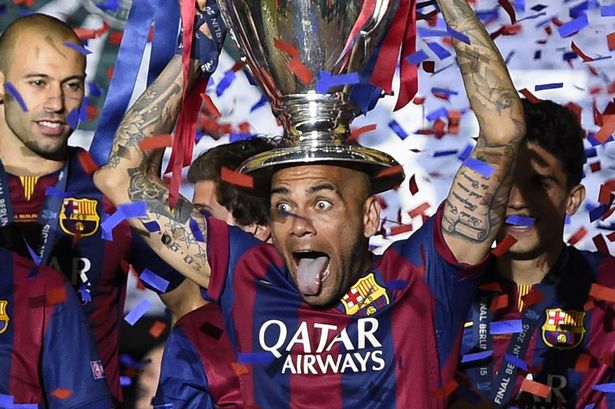
Analysis
For the following analysis, we have taken FC Barcelona’s 2010-11 season in which Dani Alves played in 54 matches and contributed 25 G/A to the team.
Note: The data for this analysis is taken from Statsbomb’s open data provided for Leo Messi’s whole career, since Messi and Alves shared the pitch 30 out of the 35 times Alves played in the 2010-11 LaLiga season, we will only consider these 30 matches.
We have done the analysis on the following parameters:
1. Positioning and Reception
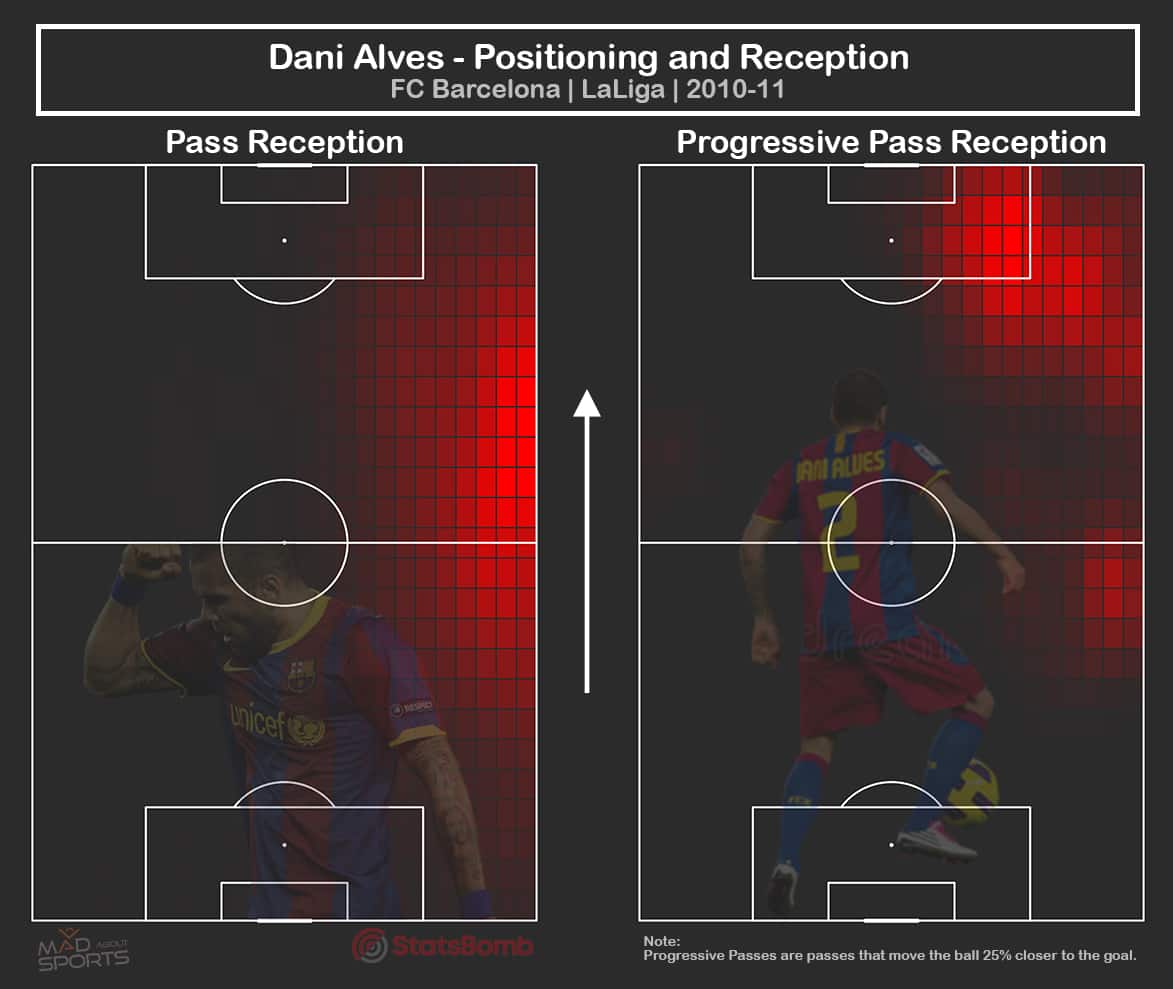
As previously mentioned, Alves is an offensive fullback. From the above visualization, we can see that most of Alves’ pass reception comes in the right flank of the opposition half. He had a high tendency to link up with Xavi and Messi by forming triangles to break the press from the opposition.
His progressive pass reception heatmap seems more like a winger’s than a fullback’s with a high frequency of reception being in the opposition box. With Messi usually playing in the right half-space and attracting extra defenders, the right flank used to be open and Alves used to make sure to take advantage of that open flank by making excellent runs off-the-ball.
In the 30 matches we have analyzed, Alves has received 4.88 progressive passes per 90 and received almost 50% of the passes from Messi, Xavi, and Victor Valdes.
2. Goals and Assists
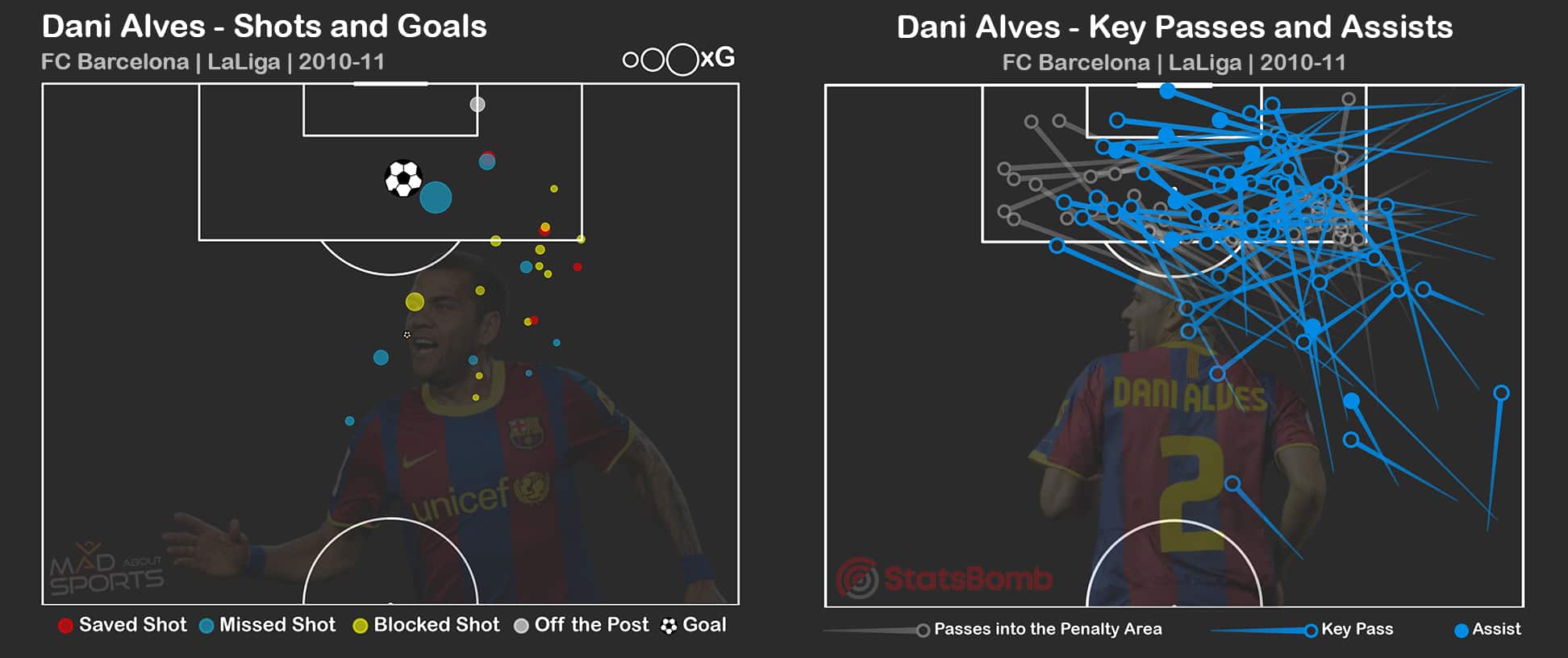
Considering he’s a right-back, all his shots and key passes came from the right flank. Even though Alves is an offensive fullback, he didn’t really have an eye for the goal, but what he did have was the ability to serve goals on a platter for his teammates.
He scored 2 goals from 1.59 xG (Expected Goals) while providing 10 assists and 45 Key Passes from 8.12 xA (Expected Assists) in these 30 matches.
3. Passing
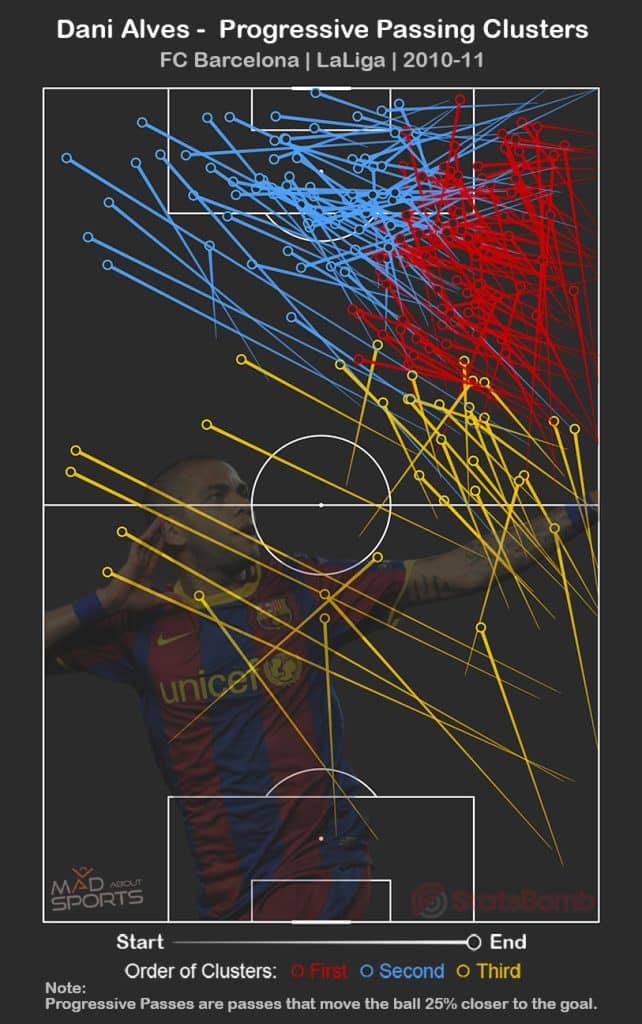
Alves’ ability to find his teammates in dangerous positions was top-notch. His passing range was excellent. Not only was he good at forming triangles, making third-man runs, and linking up short with his teammates; but he was also good at switching the play and finding his teammates with space to attack.
He had 7.26 Progressive Passes per 90 with 30% of those progressive passes going to Messi.
4. Carrying and Dribbling
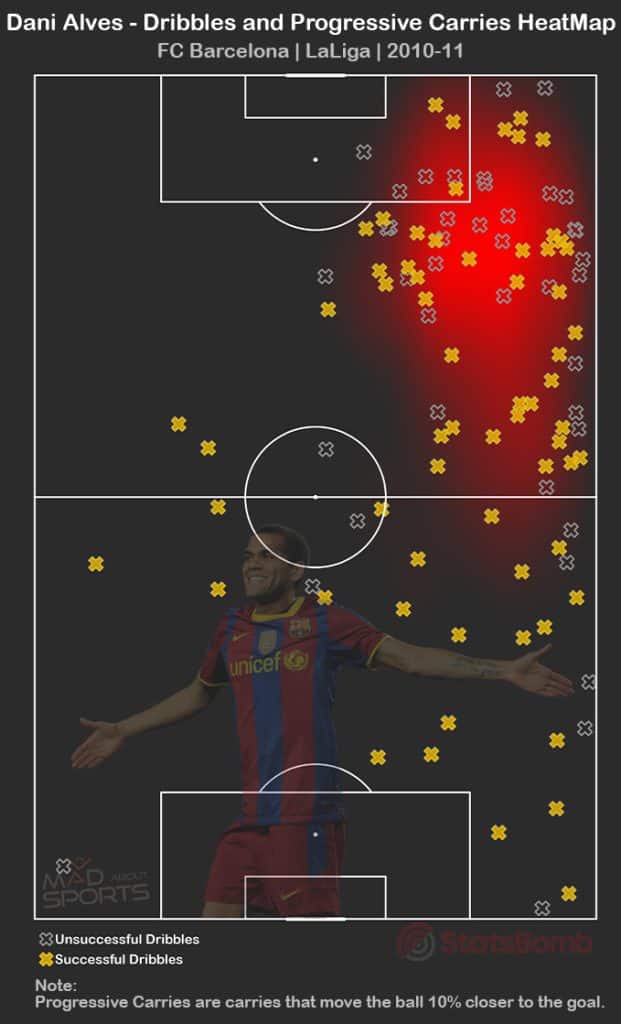
Alves had the complete package on the ball. His passing skills accompanied by his excellent dribbling and ball-carrying abilities made him lethal. His tight ball control with a good amount of pace and acceleration made him a nightmare to defend.
As we can see from the above visualization, his progressive carries almost end into/right outside the penalty area on the right flank.
In these 30 matches, he has made 16.9 Progressive Carries per 90 and 3.68 dribbles per 90, with a success rate of 61%.
5. Expected Threat Performance
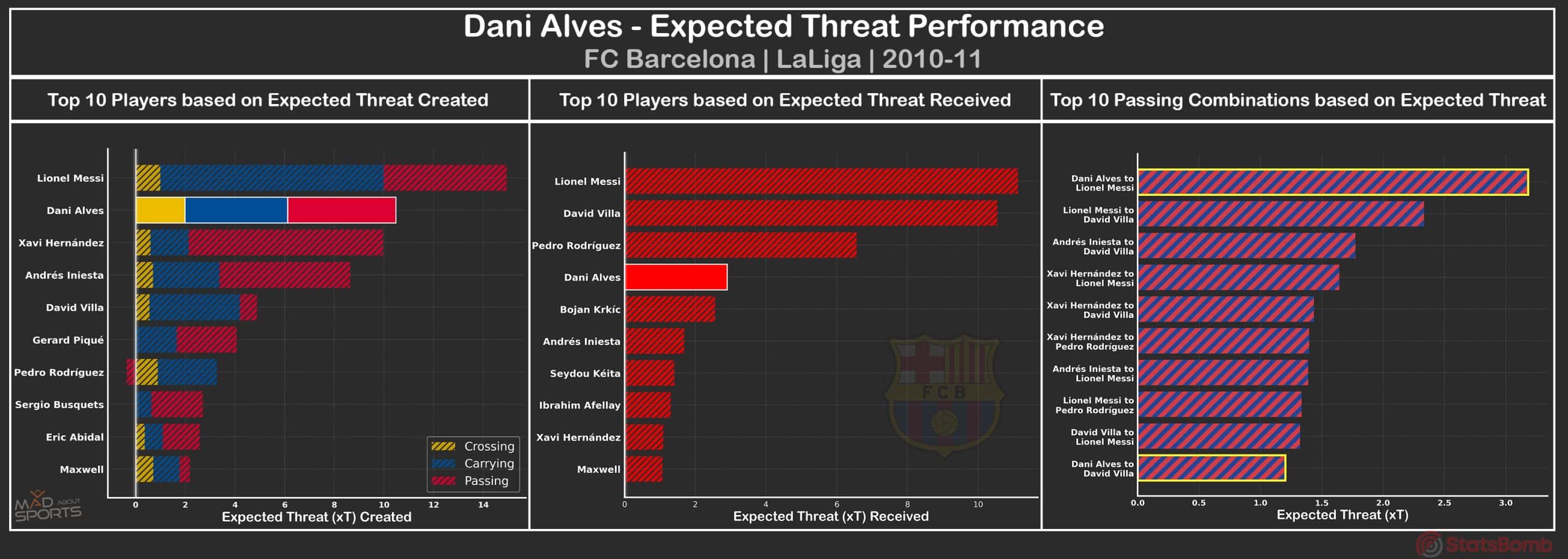
xT (Expected Threat) is another great metric to showcase Alves’ offensive prowess.
In terms of the xT created, Alves is only next to Leo Messi. His on-the-ball threat was better than the likes of forwards like Villa and midfielders like Xavi and Iniesta. In terms of xT received, he is the 4th best player, only next to all the starting forwards of the 2010-11 Barca season.
xT is also a good measure of showing Alves’ partnership with Messi. Both the players loved linking up with each other on the right flank with their 1-2s and left the opposition defenders helpless against them. Alves being an excellent passer, always tried to find Messi in threatening positions. Alves to Messi partnership has created the most xT out of all the possible passing combinations for FC Barcelona in the 2010-11 season.
6. Defensive Performance
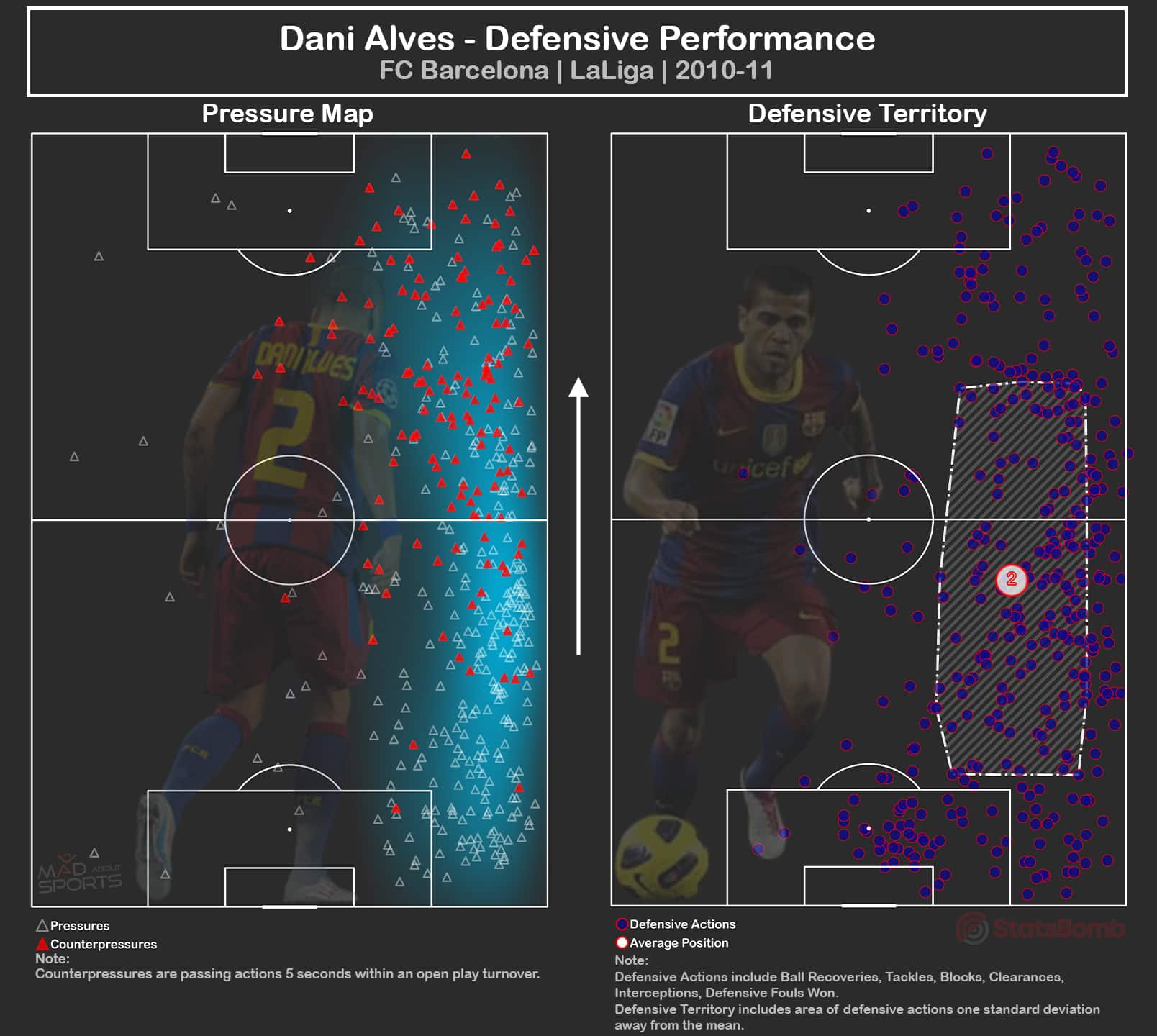
Despite contributing on a high level to the team’s attack, Alves wasn’t any liability to the team’s defense. Since Barcelona had a high amount of possession, they didn’t have a lot to defend.
However, when they lost the ball, they enforced a counter-press, a.k.a ‘5-second rule’ implemented by Pep Guardiola, in which the player performs a high-press on the player with the ball within 5 seconds of losing the ball.
From the visualization, we can see that there are high number of counter-pressures within the opposition half. He also has a good amount of successful defensive actions considering the possession Barcelona maintains.
Alves had 15.1 pressures per 90 and 4.7 counter-pressures per 90, along with 12.9 defensive actions per 90.
Conclusion
Dani Alves is considered to be one of the greatest, if not the greatest right-backs ever in the history of football. The stats and the trophy cabinet clearly back that up. While in this article we analyzed Dani Alves’ best season for the club, it is fair to say, he was outstanding whenever he went on to the pitch in a Barcelona kit.
It wouldn’t be an overstatement to say Barcelona wouldn’t have seen the success it has seen without him. Ever since he left the club in 2016, FC Barcelona tried to fill his void with other right-backs but have had no success.
In January of 2022, they came full circle by again getting a 38-year-old Dani Alves to join them and Alves gladly accepted playing for the club while charging very low wages considering the awful financial situation the club was in.
Even though the second spell might not have worked out so much, the career Dani Alves has had will go down in the history books. Whenever someone would discuss the names of the greatest fullbacks in the history of football, his name is bound to be there!


